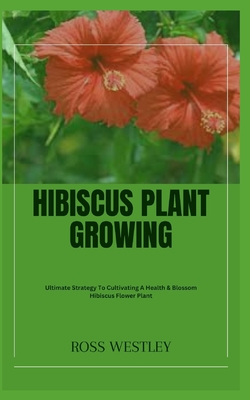Hibiscus Plant Growing: Ultimate Strategy To Cultivating A Health & Blossom Hibiscus Flower Plant

Hibiscus Plant Growing: Ultimate Strategy To Cultivating A Health & Blossom Hibiscus Flower Plant
The flowers of these plants are bright and showy, and they occur in a wide range of colors, from red and pink to orange and yellow to white and purple. Hibiscus bushes feature five-petaled blossoms that range in size and shape from huge and trumpet-shaped to small and delicate.
Plants in the genus Hibiscus are endemic to the tropics and subtropics of Asia, Africa, and the Americas. They are widely used across cultures as both decorative and medicinal plants.
Hibiscus plants come in a wide variety of species and cultivars, each with its own set of traits. Here are a few of the most common kinds of hibiscus:
- One of the most well-liked types of hibiscus is the tropical Hibiscus (Hibiscus rosa-sinensis), which is notable for its big, multicolored blossoms. It thrives in warmer climes, thus it is not limited to the tropics or subtropics, and even in cooler places, it may be cultivated in pots.
- Native to North America, the hardy Hibiscus (Hibiscus moscheutos) is sometimes known as swamp mallow or rose mallow. It is hardier against frost than its tropical counterpart and boasts spectacular, oversize blooms.
- Common names for the Hibiscus sabdariffa plant include roselle and sorrel. The calyxes are harvested for their usage in medicinal and culinary beverages. The calyxes are red, meaty, and sour.
Plants of the hibiscus family thrive in bright, sunny locations with soil that drains well. Because their flowers are attractive to pollinators like bees and butterflies, they are frequently utilized as ornamental plants in gardens and landscapes. Hibiscus plants have long been valued for more than just their aesthetic value; they have also been put to use in traditional medicine for purposes like lowering blood pressure, easing gastrointestinal distress, and fortifying the immune system.
PRP: 68.59 Lei
Acesta este Prețul Recomandat de Producător. Prețul de vânzare al produsului este afișat mai jos.
61.73Lei
61.73Lei
68.59 LeiLivrare in 2-4 saptamani
Descrierea produsului
The flowers of these plants are bright and showy, and they occur in a wide range of colors, from red and pink to orange and yellow to white and purple. Hibiscus bushes feature five-petaled blossoms that range in size and shape from huge and trumpet-shaped to small and delicate.
Plants in the genus Hibiscus are endemic to the tropics and subtropics of Asia, Africa, and the Americas. They are widely used across cultures as both decorative and medicinal plants.
Hibiscus plants come in a wide variety of species and cultivars, each with its own set of traits. Here are a few of the most common kinds of hibiscus:
- One of the most well-liked types of hibiscus is the tropical Hibiscus (Hibiscus rosa-sinensis), which is notable for its big, multicolored blossoms. It thrives in warmer climes, thus it is not limited to the tropics or subtropics, and even in cooler places, it may be cultivated in pots.
- Native to North America, the hardy Hibiscus (Hibiscus moscheutos) is sometimes known as swamp mallow or rose mallow. It is hardier against frost than its tropical counterpart and boasts spectacular, oversize blooms.
- Common names for the Hibiscus sabdariffa plant include roselle and sorrel. The calyxes are harvested for their usage in medicinal and culinary beverages. The calyxes are red, meaty, and sour.
Plants of the hibiscus family thrive in bright, sunny locations with soil that drains well. Because their flowers are attractive to pollinators like bees and butterflies, they are frequently utilized as ornamental plants in gardens and landscapes. Hibiscus plants have long been valued for more than just their aesthetic value; they have also been put to use in traditional medicine for purposes like lowering blood pressure, easing gastrointestinal distress, and fortifying the immune system.
Detaliile produsului










